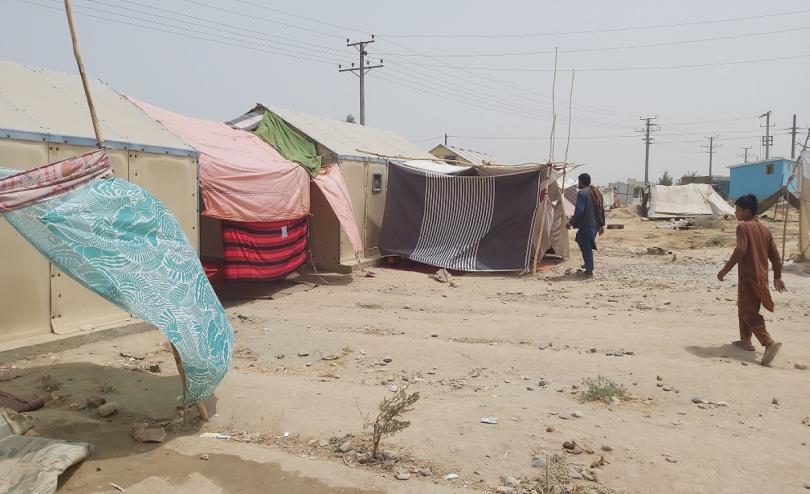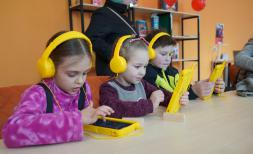One in six children globally living in areas impacted by conflict

New report shows war is becoming more dangerous for children;
Save the Children calls for greater protection for children and accountability for perpetrators ahead of Munich Security Conference
More children than ever before—at least 357 million globally—are now living in areas affected by conflict, a new report by Save the Children reveals.
The War on Children: Time to End Violations Against Children in Armed Conflict shows this number has increased by 75 per cent since the early 1990s, with one in six children globally now living in impacted areas.
Nearly half of these children are in areas affected by high-intensity conflict where they could be vulnerable to the UN’s six grave violations—killing and maiming, recruitment and use of children, sexual violence, abduction, attacks on schools and hospitals, and denial of humanitarian assistance.[i]
The report shows there are significant gaps in child and gender-specific data in conflicts that need to be addressed by improved monitoring and reporting mechanisms. Despite this, some trends are clear—and deeply worrying.
Since 2010, the number of UN-verified cases of children being killed and maimed has gone up by almost 300 per cent, while incidents of denial of humanitarian access have skyrocketed by more than 1,500 per cent. The widespread stigma around rape and sexual assault means it is an especially under-reported aspect of conflict, but it is clear that this issue remains prevalent and that both girls and boys are at risk.
This has been fuelled by a growing disregard for the rules of war, and indiscriminate violence in countries like Syria, South Sudan, Yemen and Afghanistan.
The research—carried out by Save the Children and the Peace Research Institute Oslo (PRIO)—is being launched ahead of the influential Munich Security Conference from 16th-18th February, which is an opportunity for global political, military, and security leaders to agree on measures to protect children in conflict.
The War on Children attributes the worsening situation to the increasing urbanisation of war, the growing use of explosive weapons in populated areas, as well as the protracted and more complex nature of modern conflict that has put children and civilians on the front lines.
It also reveals that:
- Brutal tactics are increasingly used to target children in warfare—including the use of children as suicide bombers, direct targeting of schools and hospitals and the widespread use of indiscriminate weapons like cluster munitions, barrel bombs and improvised explosive devices (IEDs).
- Syria, Afghanistan and Somalia were the most dangerous conflict-affected countries to be a child in 2016[ii];
- Children in the Middle East are most likely to be living in a conflict zone, with two in five children in that region living in a conflict-affected area—the highest rate globally. Africa is second, with 1 in 5 children affected by conflict. Asia has the highest overall number of children affected by conflict.
Yannick*, 15, from the Democratic Republic of Congo, was recruited to an armed group under false promises that he wouldn’t be hurt:
“(The militants) took me to another village where they had arranged a ‘baptism’ for the new recruits. The baptism gave us mystical powers and the strength to fight. I was scared. I wanted to run away. They told us that, in combat, we had nothing to fear. Even when the soldiers shot us or hurt us, nothing would happen. We wouldn’t die. They gave us a stick for fighting and a red headband.
“We went into battle in single file, armed with our sticks. The soldiers began to fire as soon as they saw us. I watched those in front of me killed by gunfire. We had waited at first, just watching the soldiers fire at us, because we had been told that a bullet could not touch us. But when we saw our friends die, we ran away.”
Save the Children International CEO, Helle Thorning Schmidt, said:
“We are seeing a shocking increase in the number of children growing up in areas affected by conflict, and being exposed to the most serious forms of violence imaginable. Children are suffering things that no child ever should; from sexual violence to being used as suicide bombers. Their homes, schools and playgrounds have become battlefields. Crimes like this against children are the darkest kind of abuse imaginable, and are a flagrant violation of international law. World leaders must do more to hold perpetrators accountable. This failure to protect children in conflict not only robs them, but also their countries—and the entire world—of a better future. We face a stark choice. Will we stand by while more children die at their school desks and in their hospital beds, are denied life-saving aid or are recruited into armed groups? Or will we tackle the culture of impunity and end the ‘war on children’ for good?”
Save the Children is calling on states, militaries, and all actors with influence over the lives of children in conflict to commit to practical actions on four key themes:
- Preventing children being put at risk: Investments need to be made in conflict-prevention initiatives and peacekeeping, and training for military forces on child protection.
- Upholding international laws and standards: All states and actors should abide by their commitments under international law, and should endorse the Safe Schools Declaration and Paris Commitments & Paris Principles.[iii] States and armed groups must commit to avoiding the use of explosive weapons in populated areas.
- Holding violators to account: We urgently need stronger monitoring and reporting mechanisms to properly track civilian harm and child casualties, and stronger justice systems that address violations of children’s rights in conflict.
- Rebuilding shattered lives: We must put children at the centre of reconstruction efforts and invest in support for children affected by conflict, including providing appropriate mental health care for children, training local mental health and social workers and assisting children with disabilities. Funding for the rebuilding of children’s lives wrecked by conflict must also be made available.
To sign a petition calling on world leaders to protect the world’s children from the horrors of armed conflict, please visit: https://act.savethechildren.net/international/waronchildren/petition/.
**ENDS**
For interview requests or additional information, please contact:
Simona Sikimic
simona.sikimic@savethechildren.org / +44 7760 221890
Antonia Roupell
a.roupell@savethechildren.org.uk / +44 7855 957 573
**Notes to editors**
The report uses UCDP (Uppsala Conflict Data Program) scientific definitions of armed conflict.
Conflict zone/area impacted by conflict: areas within 50km of where one or more conflict incident/s takes place in a given year, within the borders of a country.
Conflict/armed conflict: when armed force is used by an organised actor against another organised actor, or against civilians, resulting in at least 25 battle-related deaths in one calendar year. The definitions include three types of conflict:
1. State-based conflict takes place between two states (inter-state conflict), or between one state and one or more rebel groups (civil conflict).
2. Non-state conflict is fought between two organized, armed actors, of which neither is the government of a state.
3. One-sided violence is perpetrated by an organized armed group, either a state’s military forces or an armed group, against civilians.
Conflict incidents/events: conflicts usually consist of several conflict events – a conflict event is defined as a lethal incident, either a violent clash between two armed groups or an attack on civilians by a group/groups, at a given time and place.
[i] A conflict involving more than1,000 annual battle-related deaths.
[ii] The latest year for which comprehensive data is available.
[iii] The Paris Principles and Guidelines on Children Associated with Armed Forces or Armed Groups, developed in 2007, consolidate global humanitarian knowledge and experience in working to prevent recruitment, protect children, support their release from armed forces or armed groups and reintegrate them into civilian life. The Safe Schools Declaration, developed in 2015, provides states the opportunity to express broad political support for the protection and continuation of education in armed conflict, and is the instrument for states to endorse and commit to implement the Guidelines for Protecting Schools and Universities from Military Use during Armed Conflict. To date, 72 states have signed the declaration.




